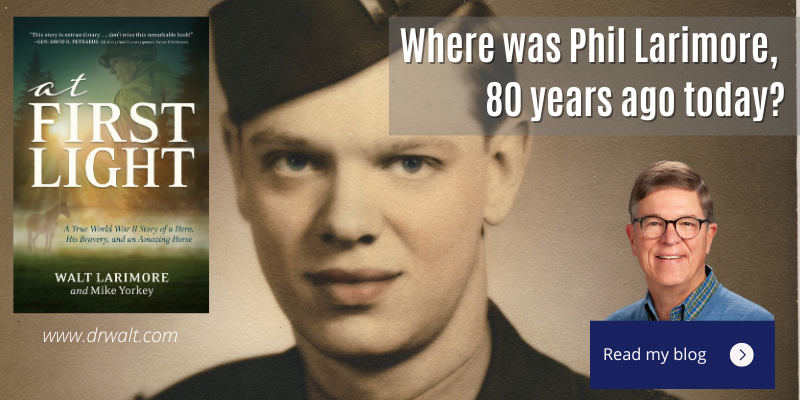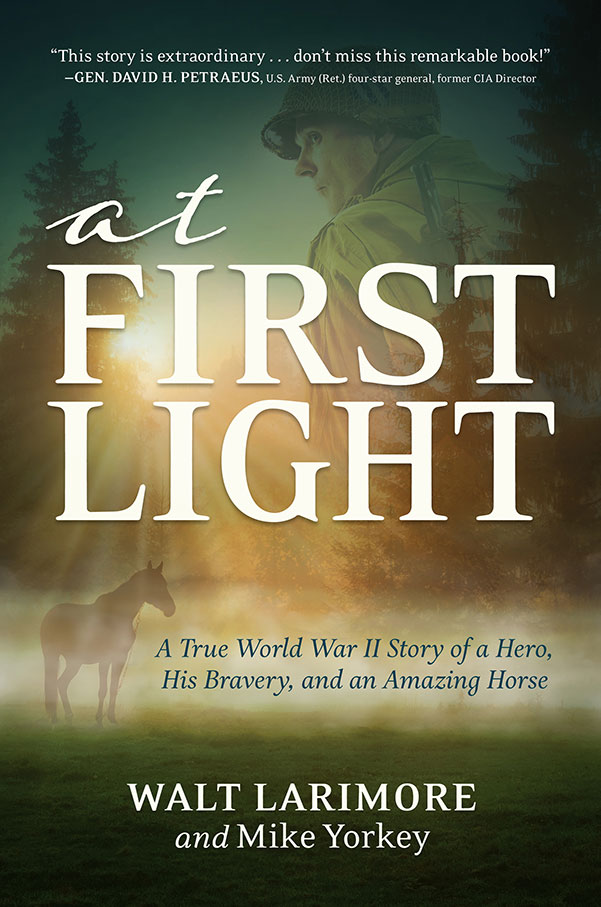
February 21, 1944 – A teenage WWII hero arrives at his new battalion on Anzio
February 21, 2024
February 23, 1944 – A teenage WWII hero’s faces his first death on the front line at Anzio
February 23, 2024Ross Calvert, Phil’s good friend from Officer Candidate School two years before, walked him into the building, where Phil’s men rose to attention. “At ease!” Ross ordered. He introduced Phil and added, “I trained this man myself. He’s the youngest ever to enter and survive OCS, and he did so with honors. Lieutenant Larimore was one of my best students. He’s a good leader and a better learner. Also, my friend.” Ross looked around at the men. “I need y’all to take care of him, ya hear?”

“Yes, sir!” responded the soldiers in unison.
One of the sergeants looked at Phil, then Ross. “As long as he ain’t a numskull like the last one, sir.”
“He ain’t,” Ross said, laughing and patting Phil on the shoulder before leaving.
Phil sat down with the men, and as he looked in their eyes and heard their stories, he realized that Ross was right: he had a cracker jack unit under his command. Of the twenty-six men in his platoon, fifteen of them were “old men” who had hit the beaches in North Africa.
Phil knew that the mission of an Ammunition and Pioneer platoon, or A&P platoon, was to undertake a wide variety of manual tasks, including the extremely risky job of hauling ammunition to forward positions, often under enemy fire.
Each of his three Pioneer squads was led by a sergeant with seven to ten riflemen. Phil also had at his disposal a driver for the platoon’s Jeep, which was armed with a mounted .50-caliber heavy machine gun. He also had two additional Jeeps capable of pulling quarter-ton trailers loaded to the brim with ammunition, mines, mine-defusing equipment, and necessary tools like wire cutters.
One of Phil’s sergeants explained what they were up against.
“I have to be honest,” the sergeant said. “Life here on the Anzio Beachhead isn’t beer and skittles. Each day is muddy, dirty, dangerous work. We have to stay in our foxholes all day and keep our heads down because the battlefield is on flat ground.”
The sergeant waved a hand toward the Lepini mountains ringing the beachhead. From their perches, the German artillery platoons had a perfect view of the entire beachhead, which was ten miles wide and eight miles deep.
“The Krauts look right down our throats. Every time someone moves, they throw all kinds of artillery at us. But as soon as it gets dark, that’s when we start moving up to the front lines, bringing more ammo and supplies. Sometimes we have to deliver TNT. Carrying an eighteen-pound pack of explosives on your back isn’t for the faint of heart since an enemy bullet can blow you to smithereens.”
Phil knew this, but he still shuddered.
The sergeant continued. “We’ve been going into ‘no man’s land’ because a lot of our work, from laying down concertina wire[1] to planting mines, has to be done in front of the lines. If a Kraut patrol catches us, we beat the hell out of them. Then we leave just before dawn so that we’re back in our foxholes before sunup.”
[1] Concertina wire was a type of barbed wire or razor wire that could be expanded like a concertina, a small handheld, bellows-type instrument similar to an accordion. It packed flat for ease of transport and could be deployed as an obstacle much more quickly than ordinary barbed wire.
In case you haven’t read or listened to Dad’s book, you can learn more or order it here.
© Copyright WLL, INC. 2024.



